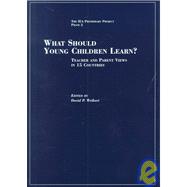|
xi | ||||
|
xv | ||||
| Acknowledgments | xvii | ||||
| Preface | xix | ||||
| A Word About IEA | xxiii | ||||
|
3 | (14) | |||
|
|||||
|
|||||
|
4 | (2) | |||
|
5 | (1) | |||
|
6 | (1) | |||
|
6 | (4) | |||
|
6 | (1) | |||
|
7 | (1) | |||
|
7 | (2) | |||
|
9 | (1) | |||
|
9 | (1) | |||
|
10 | (5) | |||
|
15 | (1) | |||
|
16 | (1) | |||
|
17 | (30) | |||
|
|||||
|
|||||
|
17 | (2) | |||
|
17 | (1) | |||
|
18 | (1) | |||
|
18 | (1) | |||
|
18 | (1) | |||
|
19 | (4) | |||
|
19 | (1) | |||
|
20 | (1) | |||
|
20 | (1) | |||
|
21 | (1) | |||
|
22 | (1) | |||
|
23 | (22) | |||
|
23 | (2) | |||
|
25 | (2) | |||
|
27 | (2) | |||
|
29 | (1) | |||
|
30 | (1) | |||
|
31 | (2) | |||
|
33 | (1) | |||
|
34 | (1) | |||
|
35 | (1) | |||
|
36 | (1) | |||
|
37 | (2) | |||
|
39 | (1) | |||
|
40 | (1) | |||
|
41 | (1) | |||
|
42 | (3) | |||
|
45 | (2) | |||
|
47 | (12) | |||
|
|||||
|
48 | (1) | |||
|
49 | (8) | |||
|
52 | (3) | |||
|
55 | (1) | |||
|
56 | (1) | |||
|
56 | (1) | |||
|
57 | (2) | |||
|
59 | (20) | |||
|
|||||
|
|||||
|
60 | (15) | |||
|
60 | (5) | |||
|
65 | (10) | |||
|
75 | (1) | |||
|
76 | (3) | |||
|
79 | (30) | |||
|
|||||
|
79 | (5) | |||
|
80 | (1) | |||
|
81 | (3) | |||
|
84 | (10) | |||
|
84 | (1) | |||
|
84 | (4) | |||
|
88 | (2) | |||
|
90 | (4) | |||
|
94 | (1) | |||
|
94 | (12) | |||
|
94 | (2) | |||
|
96 | (4) | |||
|
100 | (1) | |||
|
101 | (4) | |||
|
105 | (1) | |||
|
106 | (3) | |||
|
109 | (16) | |||
|
|||||
|
109 | (4) | |||
|
111 | (1) | |||
|
111 | (1) | |||
|
111 | (2) | |||
|
113 | (3) | |||
|
116 | (7) | |||
|
117 | (3) | |||
|
120 | (3) | |||
|
123 | (2) | |||
|
125 | (32) | |||
|
|||||
|
126 | (28) | |||
|
126 | (4) | |||
|
130 | (3) | |||
|
133 | (4) | |||
|
137 | (3) | |||
|
140 | (3) | |||
|
143 | (4) | |||
|
147 | (4) | |||
|
151 | (3) | |||
|
154 | (1) | |||
|
155 | (2) | |||
|
157 | (20) | |||
|
|||||
|
158 | (3) | |||
|
161 | (3) | |||
|
164 | (6) | |||
|
165 | (3) | |||
|
168 | (2) | |||
|
170 | (1) | |||
|
170 | (5) | |||
|
171 | (1) | |||
|
172 | (1) | |||
|
172 | (3) | |||
|
175 | (2) | |||
|
177 | (22) | |||
|
|||||
|
178 | (3) | |||
|
181 | (3) | |||
|
184 | (3) | |||
|
187 | (3) | |||
|
190 | (4) | |||
|
190 | (2) | |||
|
192 | (2) | |||
|
194 | (1) | |||
|
194 | (4) | |||
|
198 | (1) | |||
|
199 | (12) | |||
|
|||||
|
200 | (6) | |||
|
206 | (4) | |||
|
210 | (1) | |||
|
211 | (18) | |||
|
|||||
|
212 | (2) | |||
|
214 | (11) | |||
|
215 | (2) | |||
|
217 | (1) | |||
|
218 | (1) | |||
|
219 | (1) | |||
|
220 | (2) | |||
|
222 | (2) | |||
|
224 | (1) | |||
|
225 | (4) | |||
| Appendix A: The Expectations Questionnaire | 229 | (4) | |||
| Appendix B: Supplementary Tables for Chapter 5 | 233 | (8) | |||
| Appendix C: Supplementary Table for Chapter 6 | 241 | (6) | |||
| Appendix D: Supplementary Tables for Chapter 7 | 247 | (18) | |||
| Appendix E: Supplementary Tables for Chapter 8 | 265 | (4) | |||
| Appendix F: Supplementary Tables for Chapter 9 | 269 | (6) | |||
| Appendix G: IEA Preprimary Project Phase 2 National Research Centers and Coordinators | 275 | (4) | |||
| References | 279 |








